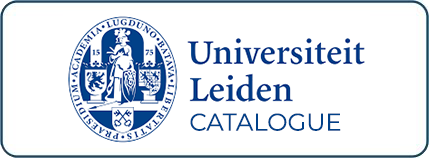MEDICAL TAKAFUL (INSURANCE) REFORM: MODELS AND STRUCTURES
DOI:
https://doi.org/10.33102/mjsl.vol5no2.64Keywords:
shari'ah, medical, healthcare, insuranceAbstract
Living with healthy life is among the prime natural concern of everyone regardless of one's status or background. A proper health–care requires money and today, it is one of the most expensive components of expenditure, which is not affordable to everyone thus, medical takaful (insurance) may be a solution. In view of creating a healthy society, several developing countries make the medical insurance compulsory. In the Kingdom of Saudi Arabia on the other hand, the health insurance has not been made mandatory yet on everyone living in the Kingdom, the native or the expatriate. The law of the Kingdom in general, is a Shari’ah (Islamic law) while its recognized insurance model is based on the cooperative (ta’awuni) principles (Al-Qur’an (5:2). In creating a healthier society by encouraging everyone to care about health, the medical takaful may be an effective step to be taken in to consideration thus, its reform is an emergence factor by allowing choices in package within the supreme law of the Kingdom. An attempt is thus made in this paper to analyze possible reformed models and structures of medical insurance appropriate for the Kingdom's environment. In establishing the idea, some experiences will be analyzed as a reference from the existing practices of the Kingdom of Saudi Arabia and also the Malaysian practices of medical takaful as the pioneer of the scheme.
Downloads
References
Appendix – Brochure Health-Care Insurance, Takaful Malaysia
Arab News, 2015, “Only 3 million Saudis have health insuranceâ€, Saturday 19 December, Saudi Arabia.
Al-Amri, K., 2015,â€Takaful insurance efficiency in the GCC countriesâ€, Humanomics, 344.
Billah, M.M.,2003, Islamic Insurance: Ilmiah Publisher, Malaysia.
Brochure, Health-Care Takaful Plan, Takaful Malaysia
Health Ministry aims to link insurance companies service providers with CCHI, 2010, Cooperative Health Insurance, April, Issue 9, Saudi Arabia.
Zohair A. Sebai, et.al.(2001),†Health Care Services In Saudi Arabia: Past, Present And Futureâ€, Journal of Family & Community Medicine, 8 (3), Saudi Arabia.
http://www.insuranceinfo.com.my/choose_your_takaful/things_to_note/medical_health_takaful.php?intPrefLangID=1&#content1
Health care in Saudi Arabia: https://en.wikipedia.org/wiki/Health_care_in_Saudi_Arabia#Benefits
https://www.hsbc.com.my/1/2/personal-banking/insurance/hbmy_healthcash_plan?WT.ac=MYH_HCP_AFP
International health plan, Bupa Arabia (KSA).
Kingdom of Saudi Arabia Cooperative Health Insurance Council Secretariat General, Implementing Regulation of the Cooperative Health Insurance Law Approved in Session (93) Dated 11/3/1435H Approved by Ministerial Order (9/35/1/DH) Dated 13/4/1435H.
The Council of the Cooperative Health Insurance (CCHI), 2015, Arab News (Saturday 19 December 2015.
Sunan al-Tirmidhi: Sifatul Qiyamah: 2517
Takaful myHealth Protector, Takaful Malaysia.
Takaful Malaysia, Health-Care Insurance Plan, Appendix (Package A)
Takaful Malaysia, Health-Care Insurance Plan, Appendix (Package B)
Takaful my Health Protector Simply A Better Choice for Your Health, Takaful Malaysia.
The Takaful Act (Malaysia) 1984 (repealed)
The Islamic financial Services Act (Malaysia) 2013.
Yusof, M. F.,1999, "The Concept and Working System of insurance" Institute of Islamic Banking & Insurance, London.
Zawya, 2009, "Saudi Arabia Healthcare and Pharmaceuticals Forecast (Market Profile)" Retrieved at: October 2, 2009. Retrieved from:
http://www.zawya.com/printstory.cfm?storyid=EIU20081101211439546&l=000000080828

Downloads
Published
Issue
Section
License
Copyright (c) 2017 Mohd Ma’Sum Billah

This work is licensed under a Creative Commons Attribution-NonCommercial 4.0 International License.














































